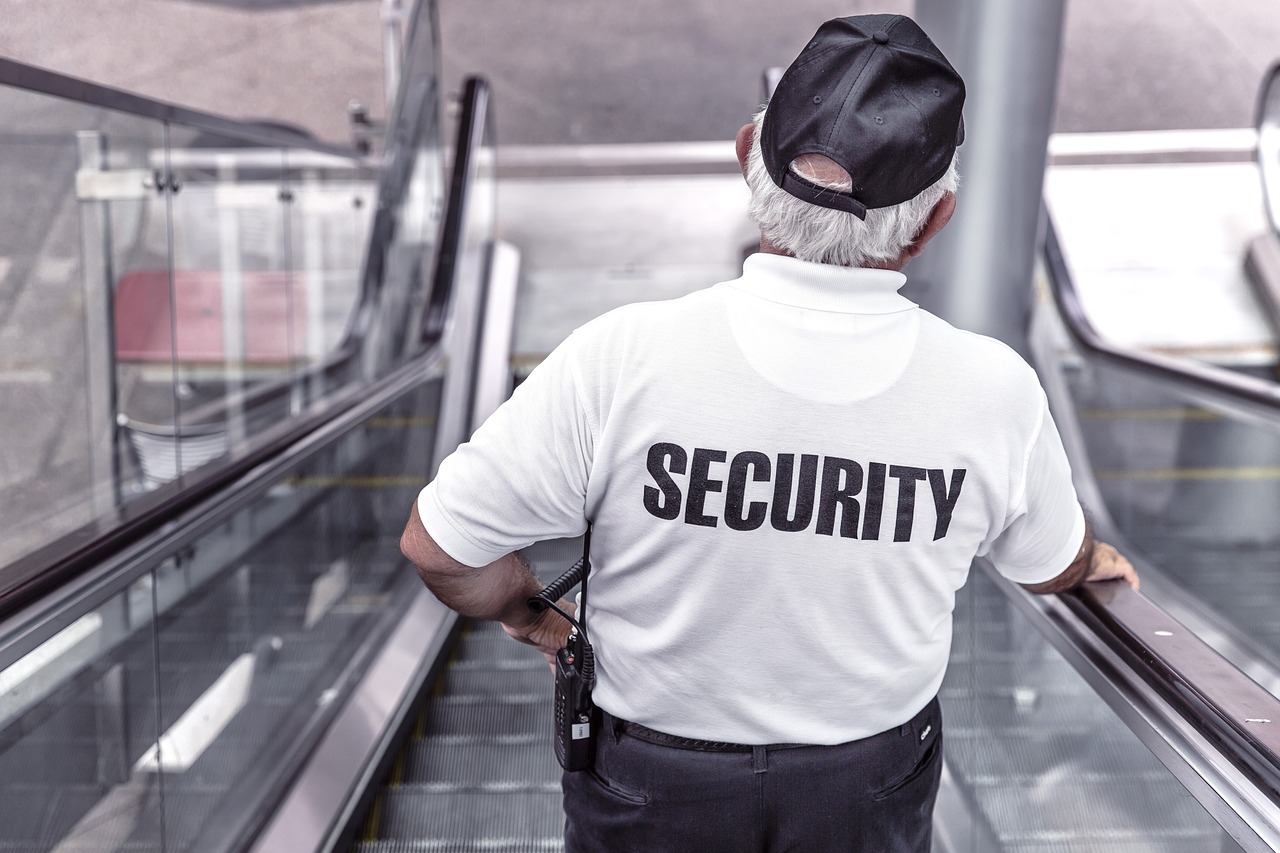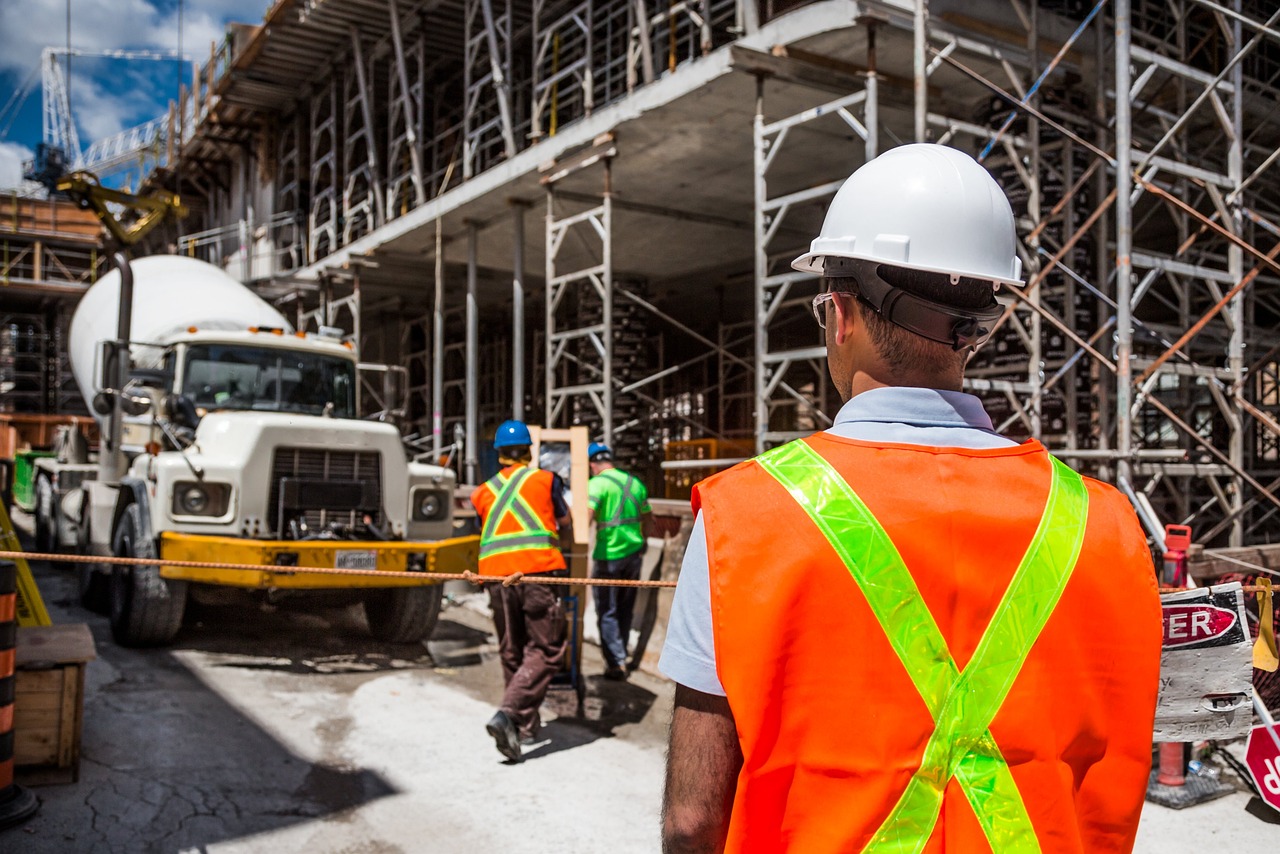Harnessing the Power of Human Behavior for Instilling Safety Measures
In our fast-paced world, the importance of safety cannot be overstated. Whether at home, work, or in public spaces, ensuring that individuals adhere to safety protocols is essential for protecting lives. But how do we encourage people to follow these measures? The key lies in understanding human behavior. By tapping into the psychological and social factors that drive our actions, we can design safety measures that resonate with people on a deeper level. This article explores how understanding human behavior can enhance safety protocols and practices in various environments, ultimately leading to a safer society for everyone.
Imagine a world where safety is not just a set of rules but a natural part of daily life. This vision can be realized by harnessing the power of human behavior. By recognizing the emotional triggers and cognitive biases that influence our decisions, we can create an environment that not only promotes safety but also encourages individuals to take ownership of their actions. In essence, when safety measures align with human instincts and social norms, compliance becomes second nature.
One of the most fascinating aspects of human behavior is how it can be shaped by our surroundings. For instance, consider the layout of a workplace. If safety equipment is easily accessible and visible, employees are more likely to use it. This simple change can drastically reduce accidents. Similarly, when safety protocols are framed positively—highlighting the benefits rather than just the risks—people are more inclined to follow them. It's all about creating a culture of safety, where individuals feel empowered rather than restricted.
Moreover, the role of community engagement cannot be overlooked. When safety becomes a collective responsibility, it fosters a sense of belonging and accountability. By involving community members in safety initiatives, we can cultivate an environment where everyone looks out for one another. This communal approach not only enhances adherence to safety measures but also strengthens social bonds, making communities safer and more resilient.
In conclusion, harnessing the power of human behavior to instill safety measures is not just an innovative approach; it is a necessary one. As we delve deeper into the psychological, economic, and cultural aspects of safety, we will uncover strategies that not only enhance compliance but also promote a culture of safety that benefits everyone. Join us as we explore the intricate relationship between human behavior and safety in the sections that follow.
- Why is understanding human behavior important for safety? Understanding human behavior helps in designing safety measures that resonate with people's instincts, making them more likely to comply.
- How can community engagement improve safety? Engaging communities fosters a collective sense of responsibility, encouraging individuals to look out for one another and adhere to safety measures.
- What role does technology play in enhancing safety? Technology, such as wearable devices and safety apps, can actively promote safer practices and facilitate real-time communication about safety issues.

The Psychology of Safety
Understanding the psychological factors that influence safety behaviors is crucial in our quest to create a safer environment. At the heart of this exploration lies the interaction between fear, perception, and motivation. These elements shape how individuals respond to safety measures and protocols, often in unexpected ways.
Let’s start with fear. It's a powerful emotion that can either paralyze us or propel us into action. When individuals perceive a threat, their instinctual response is often to avoid it at all costs. However, this fear can sometimes lead to irrational decisions. For instance, someone might avoid a seemingly dangerous situation, like riding a bike in traffic, but neglect to wear a helmet, which is a far more significant risk. This paradox highlights the importance of addressing fear in safety training—teaching individuals not just what to fear, but how to respond appropriately to those fears.
Next, we have perception. How we perceive risks can drastically alter our behavior. If a person believes that a workplace is safe, they may disregard safety protocols, thinking they are unnecessary. Conversely, if they perceive a high risk of injury, they might overreact and become overly cautious. This is where effective communication comes into play. Safety protocols should be framed in a way that enhances the perception of safety rather than instilling unnecessary fear. For example, instead of simply stating, "Use protective gear," a more effective message might be, "Wearing this gear will keep you safe and healthy, allowing you to enjoy your work without worry."
Finally, motivation is the driving force behind whether individuals choose to follow safety measures. Motivation can be intrinsic or extrinsic. Intrinsic motivation comes from within—like a personal desire to stay healthy or protect loved ones. Extrinsic motivation, on the other hand, often involves external rewards or consequences. For instance, if a company offers bonuses for teams that maintain accident-free records, employees might be more inclined to adhere to safety protocols. This blend of motivations is vital for fostering a culture of safety.
In summary, the psychology of safety is a complex interplay of fear, perception, and motivation. By understanding these factors, we can design more effective safety protocols that resonate with individuals on a deeper level. Creating a safer society isn't just about implementing rules; it's about understanding why people behave the way they do and how we can influence those behaviors positively.
- Why is understanding psychology important for safety measures?
Understanding psychology helps tailor safety measures to be more effective by addressing the emotions and perceptions that influence behavior. - How can fear impact safety behaviors?
Fear can lead to avoidance or irrational decisions, making it essential to manage fear through proper training and communication. - What role does motivation play in adhering to safety protocols?
Motivation, whether intrinsic or extrinsic, can significantly influence whether individuals choose to follow safety measures.

Behavioral Economics and Safety
Behavioral economics is a fascinating field that combines psychology and economics to understand how people make decisions. When it comes to safety, this discipline offers profound insights into why individuals might ignore safety protocols or, conversely, why they might adhere to them. Have you ever wondered why some people buckle their seat belts without a second thought, while others might neglect this simple yet life-saving action? The answers lie in the intricate dance between incentives, nudges, and human behavior.
At its core, behavioral economics suggests that our decisions are not always rational. Instead, they are often influenced by cognitive biases, emotions, and social factors. For instance, when faced with a safety protocol, a person might weigh the perceived risk of an accident against the inconvenience of following the rules. If the perceived risk is low, they may choose to skip the safety measure altogether. This is where understanding the psychology behind these decisions becomes crucial for enhancing safety practices.
One of the key aspects of behavioral economics in safety is the concept of nudges. Nudges are subtle changes in the environment or the way choices are presented that can significantly influence behavior without restricting options. For example, placing hand sanitizer stations at eye level in a workplace can encourage employees to sanitize their hands more frequently, simply by making it easier and more visible. This small adjustment leverages human behavior to promote safer practices effortlessly.
Incentives also play a pivotal role in shaping safety behaviors. They can be classified into two main categories: financial incentives and social recognition. Financial incentives, such as bonuses for accident-free months or discounts on insurance premiums for safe driving, can motivate individuals to prioritize safety. On the other hand, social recognition, like awards for exemplary safety practices in a workplace, taps into our innate desire for approval and acknowledgment from peers. Both types of incentives can create a culture of safety where individuals feel valued for their commitment to safe practices.
Moreover, understanding the principles of behavioral economics allows organizations to design safety programs that resonate more effectively with employees. For instance, instead of merely enforcing rules, companies can create engaging campaigns that highlight the benefits of safe behavior, such as improved well-being and community health. By framing safety in a positive light, organizations can shift the narrative from compliance to a shared goal of safety for everyone.
To further illustrate the impact of behavioral economics on safety, consider a workplace scenario where employees are more likely to follow safety protocols if they perceive that their colleagues are doing the same. When safety becomes a collective responsibility, it fosters an environment where individuals are more likely to adhere to safety measures because they want to be part of a team that values safety. This social dynamic is a powerful motivator that can be harnessed to improve overall safety compliance.
In conclusion, behavioral economics provides essential insights into the decision-making processes surrounding safety. By leveraging the principles of incentives and nudges, organizations can create environments that promote safer choices. Understanding the psychological factors at play can help us craft more effective safety protocols and ultimately lead to a safer society for everyone. So, the next time you think about safety measures, remember that a little nudge or a well-placed incentive might just make all the difference!
- What is behavioral economics? Behavioral economics studies how psychological factors influence economic decision-making.
- How do nudges work in safety protocols? Nudges are subtle changes in the environment that encourage safer behavior without restricting choices.
- What types of incentives can promote safety? Financial incentives, such as bonuses, and social recognition, such as awards, are effective in motivating safe behavior.
- Why is community engagement important for safety? Community engagement fosters a collective sense of responsibility, making safety a shared goal.

Incentives for Safe Behavior
When it comes to promoting safe behavior, understanding what drives people can be a game changer. One of the most effective ways to encourage individuals to prioritize safety is through incentives. These incentives can come in various forms, appealing to different motivations and psychological triggers. Imagine a workplace where employees are not only aware of safety protocols but are actively engaged in following them because they see tangible benefits. Sounds ideal, right? Well, it’s entirely achievable!
Incentives can be broadly categorized into two types: financial incentives and social recognition. Each plays a vital role in shaping behavior, and when implemented effectively, they can transform the safety culture within organizations and communities.
Financial incentives are often the most straightforward approach to encourage safe behavior. By offering monetary rewards, organizations can motivate employees to adhere to safety protocols. For instance, consider a workplace that provides bonuses for teams that maintain an accident-free record for a specified period. Not only does this approach directly reward safe practices, but it also fosters a sense of competition among teams, pushing them to prioritize safety. A study found that workplaces implementing financial incentives saw a 30% reduction in workplace accidents, proving that money can indeed talk when it comes to safety.
On the other hand, social recognition taps into our innate desire for acceptance and approval. When individuals are publicly recognized for their safe practices, it not only boosts their confidence but also encourages others to follow suit. Think about it: how often do we see safety awards or recognition programs in workplaces? These initiatives not only celebrate safe behavior but also create a ripple effect, inspiring others to adopt similar practices. For example, a monthly “Safety Star” award can motivate employees to be more vigilant about safety, knowing their efforts will be acknowledged.
In essence, combining both financial incentives and social recognition can create a powerful synergy that drives safe behaviors. It’s like adding fuel to a fire—the more you provide, the stronger the blaze of safety consciousness becomes. By implementing these strategies, organizations can cultivate an environment where safety is not just a requirement but a core value embraced by everyone.
As we move forward, it’s essential to remember that the effectiveness of these incentives can vary based on individual preferences and cultural contexts. Therefore, it’s crucial for organizations to tailor their incentive programs to meet the unique needs of their workforce. By doing so, they can ensure that their efforts to promote safety are not just seen as obligatory but are genuinely embraced by all.
- What are the most effective types of incentives for promoting safety?
Both financial incentives and social recognition have proven effective, but their success can vary based on the context and individual preferences. - How can organizations measure the effectiveness of their incentive programs?
Organizations can track safety incidents before and after implementing incentive programs to gauge their impact, alongside employee feedback. - Can incentives lead to complacency in safety practices?
Yes, if not managed properly. It’s crucial to maintain a balance and ensure that incentives encourage continuous engagement rather than a one-time effort.

Financial Incentives
When it comes to encouraging safe behavior, financial incentives can be a game changer. Imagine walking into a workplace where your commitment to safety is not just acknowledged but rewarded. This is the essence of using to motivate individuals to adhere to safety protocols. Studies have shown that when employees know there’s a tangible benefit tied to their actions, they are more likely to prioritize safety in their daily routines.
Financial incentives can take various forms, such as bonuses, discounts, or even gift cards. For example, a company might offer a monthly bonus to teams that achieve zero safety incidents. This approach not only boosts morale but also fosters a culture of safety where employees feel appreciated for their efforts. In fact, a recent survey indicated that companies implementing such financial rewards saw a 30% reduction in workplace accidents within the first year.
Moreover, it’s essential to recognize that financial incentives should be structured effectively. They must be:
- Clear: Employees need to understand what behaviors will earn them rewards.
- Achievable: The goals set should be realistic, so employees feel motivated rather than discouraged.
- Consistent: Regularly offering incentives helps reinforce the desired behaviors over time.
But it’s not just about the money; it’s about creating an environment where safety is valued and prioritized. For instance, some organizations have developed tiered reward systems, where employees can earn points for safe behavior that can be redeemed for larger rewards. This not only encourages ongoing safe practices but also creates a sense of community as employees work together towards common goals.
In addition, financial incentives can be particularly effective in community settings. Local governments can offer tax breaks or grant funding to businesses that implement comprehensive safety measures. This not only encourages compliance but also fosters a sense of shared responsibility among community members. When businesses thrive due to their commitment to safety, everyone benefits—from employees to customers and even the larger community.
In conclusion, financial incentives are a powerful tool in promoting safe behavior. By aligning monetary rewards with safety goals, organizations can create a culture where safety is not just a protocol but a shared value. As we continue to explore innovative ways to enhance safety, it’s clear that investing in our people through financial incentives can lead to a significant reduction in accidents and a more secure environment for all.
- What are financial incentives? Financial incentives are rewards given to individuals or teams to encourage specific behaviors, such as adhering to safety protocols.
- How effective are financial incentives in promoting safety? Research shows that financial incentives can lead to a significant reduction in workplace accidents, often by as much as 30%.
- What types of financial incentives can be offered? Common types include bonuses, gift cards, discounts, and tiered reward systems.
- Are financial incentives the only way to promote safety? While they are effective, combining financial incentives with education, community engagement, and cultural shifts can create a more robust safety culture.

Social Recognition
When it comes to promoting safety behaviors, plays a pivotal role that often goes unnoticed. Imagine this: you're at a workplace where safety protocols are strictly followed, and one day, a colleague goes above and beyond to ensure that everyone is safe. What if, instead of just a pat on the back, that individual received public acknowledgment from the management? This simple act of recognition can create a ripple effect, encouraging others to prioritize safety in their actions. Social recognition taps into our innate desire for approval and belonging, making it a powerful tool for instilling safety measures.
Research has shown that when individuals are publicly recognized for their safe behaviors, it not only boosts their morale but also motivates their peers to follow suit. This phenomenon can be likened to a chain reaction—one person's commitment to safety inspires another, and before you know it, a culture of safety emerges within the organization. Think about it: when people see their colleagues being celebrated for their safe practices, they are likely to feel a sense of competition and community, pushing them to adopt similar behaviors.
Moreover, the impact of social recognition extends beyond the workplace. In community settings, initiatives that celebrate safe behaviors can significantly enhance public awareness and compliance. For instance, consider a neighborhood that organizes an annual safety day where residents who demonstrate exceptional commitment to community safety are recognized. Such events not only foster a sense of community but also create a collective responsibility towards safety. It's about building a culture where safety is valued and celebrated.
To effectively implement social recognition strategies, organizations and communities can consider the following approaches:
- Public Acknowledgment: Use newsletters, social media, or bulletin boards to highlight individuals or teams that excel in safety practices.
- Formal Awards: Establish awards or certificates recognizing outstanding contributions to safety within the organization or community.
- Peer Recognition Programs: Encourage team members to nominate each other for safety-related achievements, creating a supportive environment.
In conclusion, social recognition is not just a feel-good concept; it is a practical strategy that can lead to measurable improvements in safety behaviors. By fostering an environment where safe practices are acknowledged and celebrated, organizations and communities can create a powerful incentive for individuals to prioritize safety in their daily lives. After all, who doesn't want to be recognized for doing the right thing?
Q: How can social recognition be implemented in a workplace setting?
A: Social recognition can be implemented through various means such as public acknowledgment during meetings, creating a recognition board, and establishing awards for safety achievements.
Q: What are some effective ways to recognize safety behaviors in a community?
A: Communities can host events like safety fairs, provide certificates for safe practices, and use local media to highlight individuals who contribute to community safety.
Q: Does social recognition really make a difference in safety compliance?
A: Yes, studies indicate that social recognition can significantly enhance individuals' motivation to adhere to safety protocols, leading to a safer environment overall.

Nudges in Safety Protocols
When we think about safety protocols, the first thing that often comes to mind is a set of rules or regulations that must be followed. However, what if I told you that the way these protocols are presented can significantly influence whether people actually adhere to them? This is where the concept of nudges comes into play. Nudges are subtle changes in the environment or the way choices are presented that can steer individuals towards safer behaviors without limiting their freedom of choice. Imagine walking into a cafeteria where the healthy food options are placed at eye level while the less healthy options are tucked away in the corner. This simple change can lead to healthier eating choices, illustrating how nudges can impact our decisions in everyday life.
In the realm of safety, nudges can be incredibly effective. For instance, consider a workplace where safety gear is made more accessible and visually appealing. By placing helmets and safety glasses near the entrance, employees are more likely to grab them before starting their shifts. This is a classic example of a nudge that encourages safety without mandating it. The beauty of nudges lies in their ability to create an environment that naturally promotes safer choices.
Moreover, nudges can also be implemented through reminders and visual cues. Think about a simple sign that reads, "Buckle Up for Safety!" placed prominently in a car. It serves as a gentle nudge, reminding individuals to fasten their seatbelts. Research has shown that such reminders can significantly increase compliance rates. The key is to ensure that these nudges are not perceived as intrusive; instead, they should feel like friendly prompts that support safety.
Another fascinating aspect of nudging is its application in technology. For example, safety apps can send notifications reminding users to check their safety gear or alert them to potential hazards in their environment. These digital nudges can be tailored to individual preferences, making them even more effective. By integrating nudges into technology, we can create a seamless experience that encourages safer behaviors without overwhelming users with information.
In conclusion, nudges in safety protocols are a powerful tool for enhancing adherence to safety measures. By carefully designing the environment and using reminders, we can encourage individuals to make safer choices effortlessly. It's not about restricting freedom; it's about guiding people towards the right decisions in a way that feels natural and supportive. As we continue to explore the intersection of human behavior and safety, nudges will undoubtedly play a crucial role in creating a safer society for everyone.
- What are nudges in safety protocols? Nudges are subtle changes in the environment or the way choices are presented that encourage individuals to make safer decisions without restricting their freedom of choice.
- How can nudges improve safety compliance? By making safety measures more accessible and providing gentle reminders, nudges can lead to increased adherence to safety protocols.
- Can technology enhance the effectiveness of nudges? Yes, technology can facilitate nudges through apps and notifications, providing personalized reminders that encourage safe behaviors.

Cultural Influences on Safety Behavior
Culture is like the invisible thread that weaves through our daily lives, shaping our beliefs, values, and behaviors. When it comes to safety, this cultural fabric can have a profound impact on how individuals and communities approach safety measures. Different cultures have unique perspectives on risk, responsibility, and safety practices, which can significantly influence compliance with safety protocols. For instance, in some cultures, there is a strong emphasis on collective responsibility, where the community feels a shared obligation to ensure everyone's safety. In contrast, other cultures may prioritize individual freedom, leading to a more relaxed attitude towards safety measures.
Understanding these cultural nuances is crucial for policymakers and safety advocates who aim to implement effective safety measures. When safety campaigns are culturally sensitive and tailored to resonate with specific community values, they are more likely to succeed. For example, in cultures that value hierarchy and authority, messages that come from respected leaders or elders may carry more weight than those from outsiders. Conversely, in more egalitarian cultures, peer-to-peer communication might be more effective in promoting safety behaviors.
Moreover, the way safety is perceived can vary dramatically across cultures. In some societies, risk-taking is seen as a rite of passage, while in others, it may be viewed as reckless behavior. This perception influences how people respond to safety protocols. To illustrate this point, consider the following table that highlights various cultural attitudes towards safety:
| Culture | Attitude Towards Safety | Key Influences |
|---|---|---|
| Western Cultures | Emphasis on individual responsibility | Personal freedom, risk-taking |
| Eastern Cultures | Focus on collective responsibility | Community values, respect for authority |
| Indigenous Cultures | Holistic approach to safety | Connection to nature, tradition |
As we delve deeper into the cultural influences on safety behavior, it's essential to recognize that education and awareness play pivotal roles. In cultures where safety education is integrated into community practices, individuals are more likely to adopt safer behaviors. For example, safety drills in schools or community centers can foster a culture of preparedness and awareness. Furthermore, grassroots movements that engage local leaders and influencers can amplify safety messages, making them more relatable and impactful.
In conclusion, cultural influences on safety behavior are multifaceted and complex, impacting how individuals perceive risk and adhere to safety measures. By embracing these cultural differences and tailoring safety initiatives accordingly, we can create a more robust framework for promoting safety across diverse communities. After all, safety is not just about rules and regulations; it’s about understanding the human experience and fostering a culture that prioritizes the well-being of everyone.
- How do cultural beliefs impact safety behavior? Cultural beliefs shape our perceptions of risk and responsibility, which influences how we respond to safety measures.
- Why is community engagement important in promoting safety? Engaging communities fosters a sense of collective responsibility, making safety initiatives more effective.
- What role does education play in safety behaviors? Education raises awareness and informs individuals about the importance of adhering to safety protocols.

Community Engagement
When it comes to safety, the phrase "it takes a village" couldn't be more accurate. Community engagement is a powerful tool that fosters a collective sense of responsibility towards safety measures. Think of it like a neighborhood watch program but with a broader scope, where everyone plays a role in creating a safer environment. Engaging community members in safety initiatives not only enhances compliance with safety protocols but also builds trust and camaraderie among residents.
One effective way to engage the community is through collaborative safety workshops. These workshops can provide a platform for open discussions about safety concerns, allowing residents to voice their opinions and experiences. Imagine a community gathering where people share their stories about near-misses or safety hazards in the neighborhood. This exchange of information can lead to actionable insights and a shared commitment to addressing safety issues together.
Additionally, community engagement can take the form of volunteer programs. By organizing clean-up days, safety drills, or even neighborhood patrols, residents can actively participate in making their environment safer. This not only empowers individuals but also strengthens community ties. When people feel invested in their surroundings, they are more likely to adhere to safety practices and encourage others to do the same.
Moreover, leveraging local social media platforms can be a game-changer. Communities can create dedicated pages or groups where members share safety tips, report hazards, and organize events. This digital engagement allows for real-time communication and fosters a sense of belonging. It’s like having a virtual neighborhood watch that keeps everyone informed and involved.
To illustrate the impact of community engagement, consider the following table that highlights the benefits of involving community members in safety initiatives:
| Benefit | Description |
|---|---|
| Increased Awareness | Community members become more aware of safety issues and protocols. |
| Enhanced Compliance | People are more likely to follow safety measures when they feel involved. |
| Stronger Relationships | Building trust among community members leads to a supportive environment. |
| Resource Sharing | Communities can pool resources for safety initiatives, making them more effective. |
In conclusion, community engagement is not just a nice-to-have; it is a crucial component of effective safety measures. By involving residents in safety initiatives, we can create a culture of safety that permeates throughout the community. This collective effort not only enhances compliance but also fosters a sense of pride and responsibility among individuals. So, next time you think about safety, remember that engaging the community is key to building a safer society for everyone.
- How can I get involved in my community's safety initiatives? Start by attending local meetings or workshops focused on safety. You can also volunteer for community clean-up days or safety drills.
- What are some effective ways to communicate safety issues in my neighborhood? Utilize social media platforms to create groups for sharing safety tips and reporting hazards. Regular community newsletters can also be effective.
- Why is community engagement important for safety? Engaging the community fosters a sense of responsibility and trust, leading to better adherence to safety protocols and a more proactive approach to safety concerns.

Education and Awareness
When it comes to safety, education and awareness are like the dynamic duo of a superhero team. They work hand in hand to ensure that individuals not only understand the importance of safety measures but also actively engage in them. Imagine walking into a building where everyone is wearing safety gear, following protocols, and looking out for one another. That’s the power of effective education! It’s not just about telling people what to do; it’s about instilling a culture of safety that becomes second nature.
Awareness campaigns play a critical role in this process. They serve as the megaphone that broadcasts safety messages to the public. Think of them as catchy jingles that stick in your head long after you’ve heard them. Whether it’s through social media, community workshops, or school programs, spreading the word about safety can transform attitudes and behaviors. For instance, campaigns that highlight the dangers of distracted driving have been shown to reduce accidents significantly. This is because they not only inform but also resonate with individuals on a personal level.
Moreover, education doesn't just stop at awareness; it evolves into practical training. For example, consider a workplace that conducts regular safety drills. These drills not only prepare employees for emergencies but also reinforce the importance of being vigilant and proactive. When people are trained to respond effectively, they’re more likely to act quickly and correctly in real-life situations. This is why investing in ongoing education is essential, as it keeps safety at the forefront of everyone’s mind.
As we navigate through different environments, it's vital to tailor educational initiatives to suit specific contexts. For instance, educational programs in schools might focus on bullying prevention and personal safety, while workplace training could emphasize compliance with health regulations and emergency response. The key is to ensure that the content is relevant and engaging, making it easier for individuals to absorb and apply the information.
To sum it up, education and awareness are indispensable tools in the quest for a safer society. They empower individuals with knowledge, foster a culture of responsibility, and ultimately lead to safer behaviors. When people are informed and engaged, they become active participants in their own safety and the safety of those around them.
- Why is education important for safety?
Education equips individuals with the knowledge and skills necessary to recognize hazards and respond appropriately, reducing the likelihood of accidents. - How can awareness campaigns be effective?
Effective campaigns resonate with the audience, using relatable messaging and engaging content to make safety a priority. - What role do drills play in safety education?
Drills help reinforce training, ensuring that individuals know how to react in emergencies, which can save lives. - How can I promote safety awareness in my community?
Organizing workshops, distributing informative materials, and leveraging social media are great ways to spread safety messages.

Technology's Role in Enhancing Safety
In today’s fast-paced world, technology has become a game-changer in enhancing safety across various domains. From workplaces to public spaces, innovations like apps and wearable devices are not just trends; they are vital tools that help us navigate potential hazards more effectively. Imagine walking into a construction site where every worker is equipped with a smart helmet that monitors their surroundings and alerts them to dangers in real-time. This is not science fiction; it is the reality that technology brings to the table.
One of the most significant contributions of technology to safety measures is the advent of wearable safety devices. These gadgets are designed to monitor an individual’s exposure to hazardous environments, providing instant feedback that can be life-saving. For instance, smart wristbands can track vital signs and environmental conditions, alerting the wearer if they are entering a dangerous zone. The integration of sensors and real-time data analytics can drastically reduce the risk of accidents and injuries.
Moreover, the rise of mobile safety apps has transformed how we communicate about safety issues. These applications allow users to report hazards, share safety tips, and receive alerts about potential dangers in their vicinity. For example, a community safety app could notify residents of a gas leak or a severe weather warning, ensuring that everyone stays informed and can act swiftly. The convenience of having safety information at our fingertips empowers individuals to take proactive measures, enhancing overall community safety.
To illustrate the impact of technology on safety, consider the following table that outlines key technological advancements and their applications in enhancing safety:
| Technology | Application | Benefits |
|---|---|---|
| Wearable Devices | Monitoring health and environmental hazards | Real-time alerts, injury prevention |
| Safety Apps | Reporting hazards and sharing information | Increased awareness, community engagement |
| Smart Surveillance | Monitoring public spaces for safety | Quick response to incidents, crime deterrence |
| Automated Safety Systems | Control of machinery and equipment | Reduced human error, enhanced operational safety |
As we delve deeper into the relationship between technology and safety, it’s essential to recognize that while these innovations provide remarkable benefits, they also come with challenges. Concerns about privacy, data security, and the potential for over-reliance on technology must be addressed. Striking a balance between leveraging technology for safety and maintaining individual privacy is crucial. After all, technology should serve as an aid, not a crutch.
In summary, the role of technology in enhancing safety is undeniable. From wearable devices that monitor our health to apps that keep us informed, technological advancements are paving the way for a safer future. As we continue to innovate, it is vital to ensure that these tools are used responsibly and effectively, fostering a culture of safety that benefits everyone.
- How can wearable devices improve workplace safety?
Wearable devices can monitor workers’ health metrics and environmental conditions, providing real-time alerts for potential hazards. - What role do safety apps play in community safety?
Safety apps facilitate communication about hazards, allowing users to report issues and receive alerts, thus promoting collective safety awareness. - Are there privacy concerns associated with safety technology?
Yes, while technology enhances safety, it also raises concerns about data security and privacy that need to be carefully managed.

Wearable Safety Devices
In today's fast-paced world, are becoming essential tools for enhancing personal safety and compliance with safety protocols. Imagine strapping on a device that not only tracks your movements but also keeps you alert to potential hazards. These devices, ranging from smartwatches to specialized safety bands, are designed to monitor your environment and provide real-time feedback, ensuring that you stay safe while going about your daily activities.
One of the most significant advantages of wearable safety devices is their ability to alert users to dangers before they become critical. For instance, some devices are equipped with sensors that can detect changes in environmental conditions, such as extreme temperatures or the presence of harmful gases. When such conditions are detected, the device sends an immediate alert to the user, enabling them to take action swiftly. This proactive approach to safety can be compared to having a personal safety assistant that never sleeps, always looking out for you.
Moreover, these devices can also track vital signs, such as heart rate and body temperature, providing users with valuable health insights. For example, in high-stress work environments, a sudden spike in heart rate might indicate an impending health issue, prompting the wearer to take a break or seek medical attention. This integration of health monitoring with safety measures is a game-changer, particularly in industries where physical labor is prevalent.
Let’s take a look at some popular types of wearable safety devices:
- Smartwatches: Equipped with GPS and health monitoring features, smartwatches can alert users to emergencies and track their location.
- Safety Bands: These are often used in construction and industrial settings, providing alerts for hazardous conditions and ensuring compliance with safety protocols.
- Fitness Trackers: While primarily focused on health, many fitness trackers now include safety features that can notify emergency contacts in case of an accident.
Incorporating these devices into daily routines not only enhances individual safety but also contributes to a wider culture of safety in workplaces and communities. Organizations can leverage data collected from these devices to identify patterns and areas for improvement in safety protocols. Imagine a scenario where a construction company analyzes data from employee wearables to pinpoint when and where accidents are most likely to occur, allowing them to implement targeted training and preventive measures.
As technology continues to evolve, the future of wearable safety devices looks promising. Innovations such as augmented reality (AR) glasses could provide real-time safety information directly in the user's line of sight, making safety protocols more intuitive and easier to follow. The integration of artificial intelligence (AI) could also enhance these devices, allowing them to learn from user behavior and adapt to their specific safety needs.
In conclusion, wearable safety devices are not just trendy gadgets; they are powerful tools that can significantly improve safety compliance and awareness. By embracing these technologies, individuals and organizations can create a safer environment, ultimately leading to a more secure society. As we look ahead, it's clear that the fusion of technology and safety is a trend that will continue to grow, shaping how we think about and approach safety in our everyday lives.
Q1: What types of wearable safety devices are available?
A1: There are several types of wearable safety devices, including smartwatches, safety bands, and fitness trackers, each designed to enhance safety in different environments.
Q2: How do wearable safety devices alert users to dangers?
A2: These devices use sensors to detect hazardous conditions and can send alerts through vibrations, sounds, or notifications on connected devices.
Q3: Can wearable safety devices monitor health?
A3: Yes, many wearable safety devices come equipped with health monitoring features that track vital signs, providing valuable insights into the wearer’s health.
Q4: How can organizations benefit from wearable safety devices?
A4: Organizations can analyze data from these devices to identify safety trends, improve training programs, and enhance overall workplace safety protocols.

Safety Apps and Platforms
In today's fast-paced world, technology is playing an increasingly vital role in enhancing safety measures across various domains. Safety apps and platforms are at the forefront of this evolution, providing users with tools that not only facilitate real-time communication but also promote safer practices in everyday life. Imagine having a safety companion right in your pocket, ready to alert you to potential hazards or connect you with emergency services at the touch of a button. This is the reality that safety apps bring to the table.
One of the most significant advantages of these applications is their ability to foster community engagement. Many safety apps allow users to report hazards, share safety tips, and even coordinate safety drills within their neighborhoods or workplaces. By creating a digital space where individuals can communicate, these platforms help cultivate a sense of collective responsibility towards safety. For instance, apps like Nextdoor or Citizen enable users to stay informed about local safety issues, ranging from neighborhood crime reports to environmental hazards, thus empowering them to take proactive measures.
Moreover, the integration of location-based services in safety apps cannot be overstated. These features allow users to receive alerts tailored to their specific geographical area. For example, if there’s a severe weather warning or a hazardous material spill nearby, users can receive instant notifications. This real-time information is crucial for making quick decisions that can save lives. Furthermore, many apps provide access to emergency contacts and resources, ensuring that help is just a click away.
Another innovative aspect of safety apps is their capability to facilitate emergency response. Some platforms offer a panic button feature that, when activated, sends an alert to designated contacts or emergency services with the user's location. This can be a game-changer in critical situations, where every second counts. Additionally, many apps include features for tracking friends or family members during events or outings, ensuring that everyone remains safe and accounted for.
To illustrate the variety of safety apps available, consider the following table that highlights some popular options and their key features:
| App Name | Key Features |
|---|---|
| Life360 | Location sharing, emergency alerts, and driving safety features. |
| My Safetipin | Safety audits, crowd-sourced safety ratings, and safe route planning. |
| SafeTrek | Panic button feature, location tracking, and emergency services notification. |
| Citizen | Real-time crime and safety alerts based on user location. |
As we navigate through a world filled with uncertainties, the importance of these safety apps becomes even more pronounced. They not only provide a sense of security but also empower individuals to take charge of their safety and that of their loved ones. In a way, these apps serve as a digital safety net, connecting us with our communities and resources in times of need.
In conclusion, safety apps and platforms are revolutionizing the way we approach safety in our daily lives. By leveraging technology, they enhance communication, provide real-time updates, and foster community engagement, ultimately leading to a safer society for everyone. So, why not download a safety app today and take the first step towards safeguarding yourself and your loved ones?
- What are safety apps? Safety apps are mobile applications designed to enhance personal safety and security by providing features such as emergency alerts, real-time notifications, and community engagement tools.
- How do safety apps work? Most safety apps utilize location-based services to send alerts and notifications to users about potential hazards or emergencies in their vicinity.
- Are safety apps effective? Yes, safety apps can be highly effective in promoting safer behaviors and providing immediate access to emergency resources, thereby enhancing overall safety.
- Can safety apps replace traditional safety measures? While safety apps are a valuable tool for enhancing safety, they should complement traditional safety measures rather than replace them.
Frequently Asked Questions
- How does understanding human behavior improve safety measures?
Understanding human behavior allows us to tailor safety measures that resonate with people's motivations and fears. By recognizing what drives individuals to act safely, we can create protocols that are more likely to be followed. This approach leads to a more profound commitment to safety from everyone involved.
- What role does behavioral economics play in promoting safety?
Behavioral economics helps us understand the decision-making processes behind safety behaviors. By using incentives and nudges, we can influence choices in a way that promotes safer actions. Essentially, it’s about making the safe choice the easy choice, which can lead to significant improvements in safety compliance.
- Can financial incentives effectively encourage safe behavior?
Absolutely! Financial incentives can be a powerful motivator for individuals to adhere to safety protocols. When people see tangible rewards for their safe actions, they are more likely to prioritize safety in their daily lives, whether at work or in the community.
- How does social recognition impact safety practices?
Social recognition can have a profound effect on safety behaviors. When individuals are publicly acknowledged for their commitment to safety, it not only boosts their morale but also encourages others to follow suit. It creates a culture where safety is valued and appreciated, promoting a collective responsibility.
- What are nudges, and how do they work in safety protocols?
Nudges are subtle changes in the environment that can influence people's behavior without restricting their freedom of choice. For example, placing safety equipment in easily accessible locations can nudge individuals to use them more often, fostering a safer environment.
- How do cultural differences affect safety behaviors?
Cultural norms and values significantly shape how communities approach safety. Different cultures may have varying perceptions of risk and safety, which can influence policy-making and the effectiveness of safety initiatives. Understanding these cultural differences is key to developing strategies that resonate with diverse populations.
- What strategies can engage communities in safety initiatives?
Effective strategies include organizing community workshops, safety drills, and awareness campaigns that involve local members. By fostering a sense of ownership and responsibility, communities are more likely to engage actively in safety efforts, leading to a collective commitment to safer practices.
- Why is education important for safety awareness?
Education is crucial because it empowers individuals with the knowledge they need to recognize hazards and understand safety protocols. Awareness campaigns can significantly shift attitudes towards safety, making it a priority in everyday life.
- How can technology enhance safety behaviors?
Technology plays a vital role in enhancing safety through innovations like wearable devices and safety apps. These tools can monitor compliance, alert users to potential dangers, and facilitate real-time communication about safety issues, ultimately promoting a safer environment.
- What are wearable safety devices, and how do they work?
Wearable safety devices are gadgets like smartwatches or fitness trackers that monitor safety compliance. They can alert users to potential hazards or unsafe conditions, encouraging proactive safety measures and ensuring that individuals remain aware of their surroundings.
- How do safety apps improve communication regarding safety issues?
Safety apps facilitate real-time communication among individuals and organizations about safety concerns. They enable users to report hazards, share information, and collaborate on safety initiatives, making it easier to address issues promptly and effectively.



















